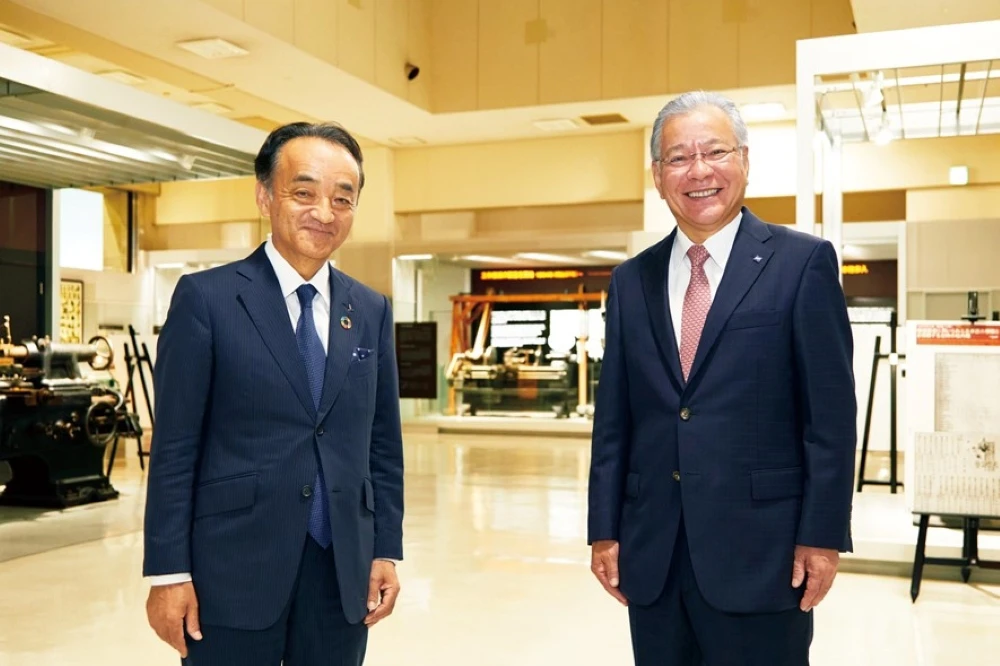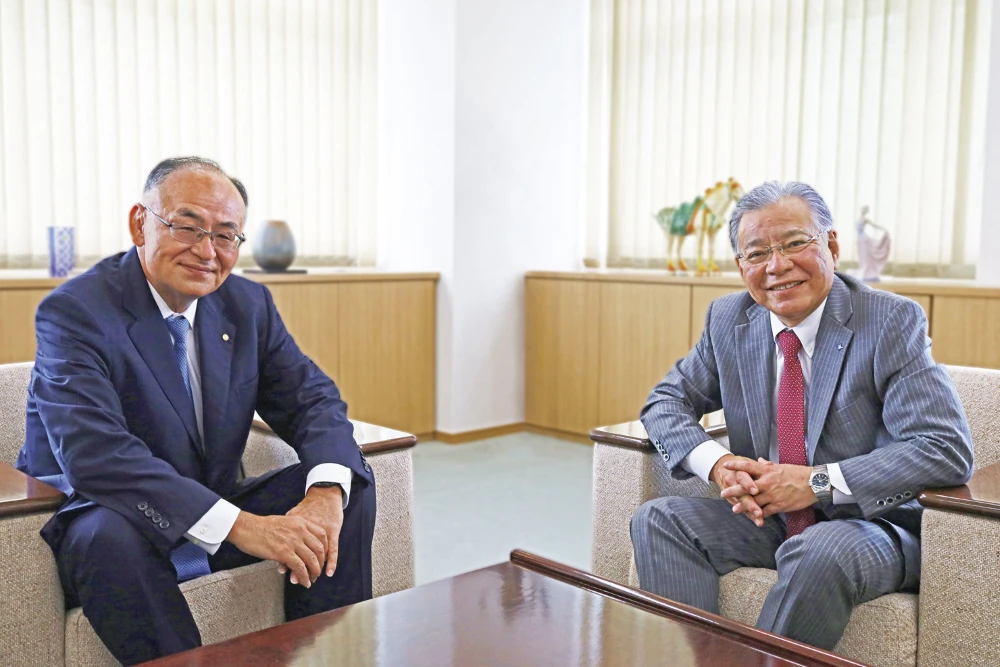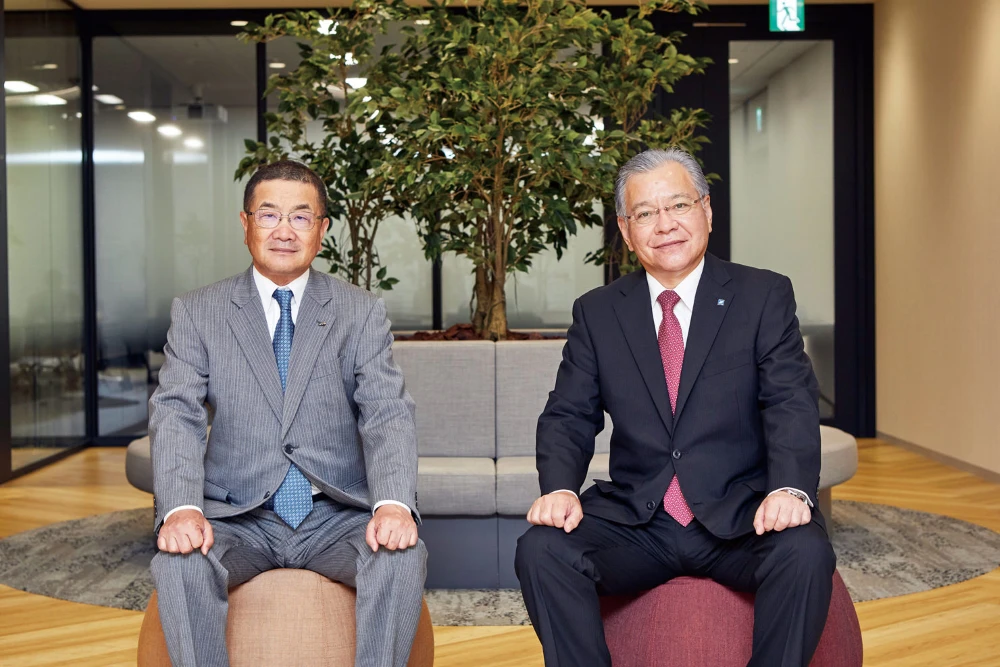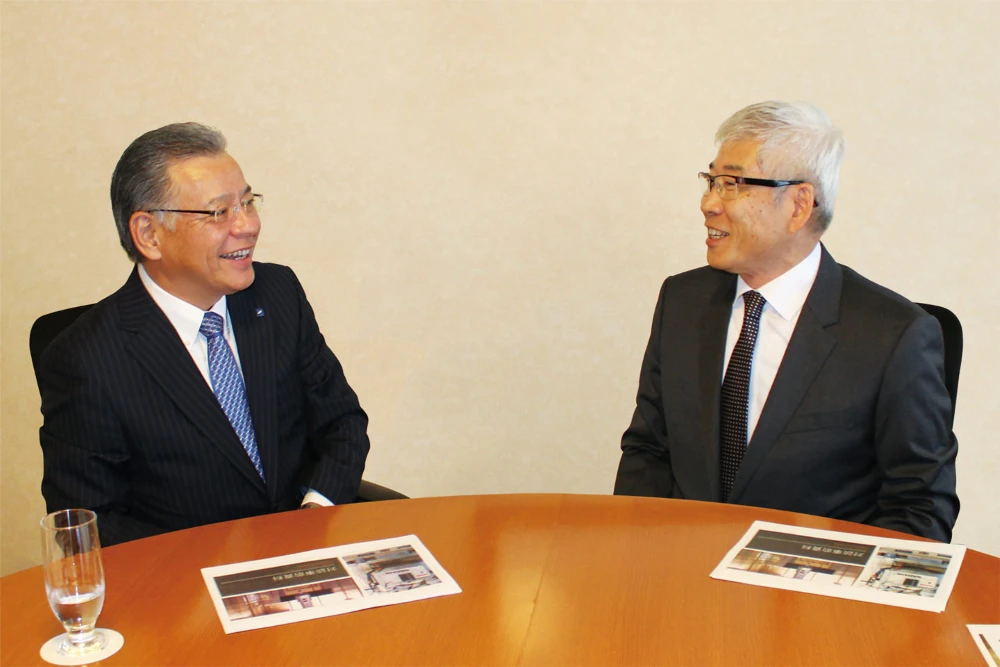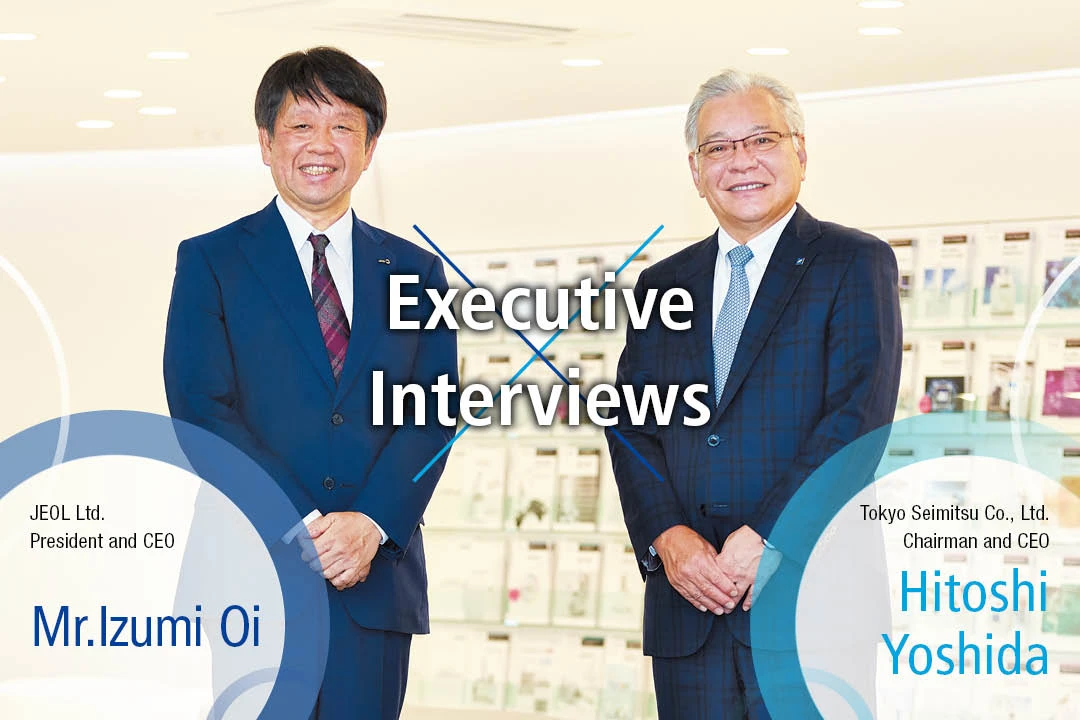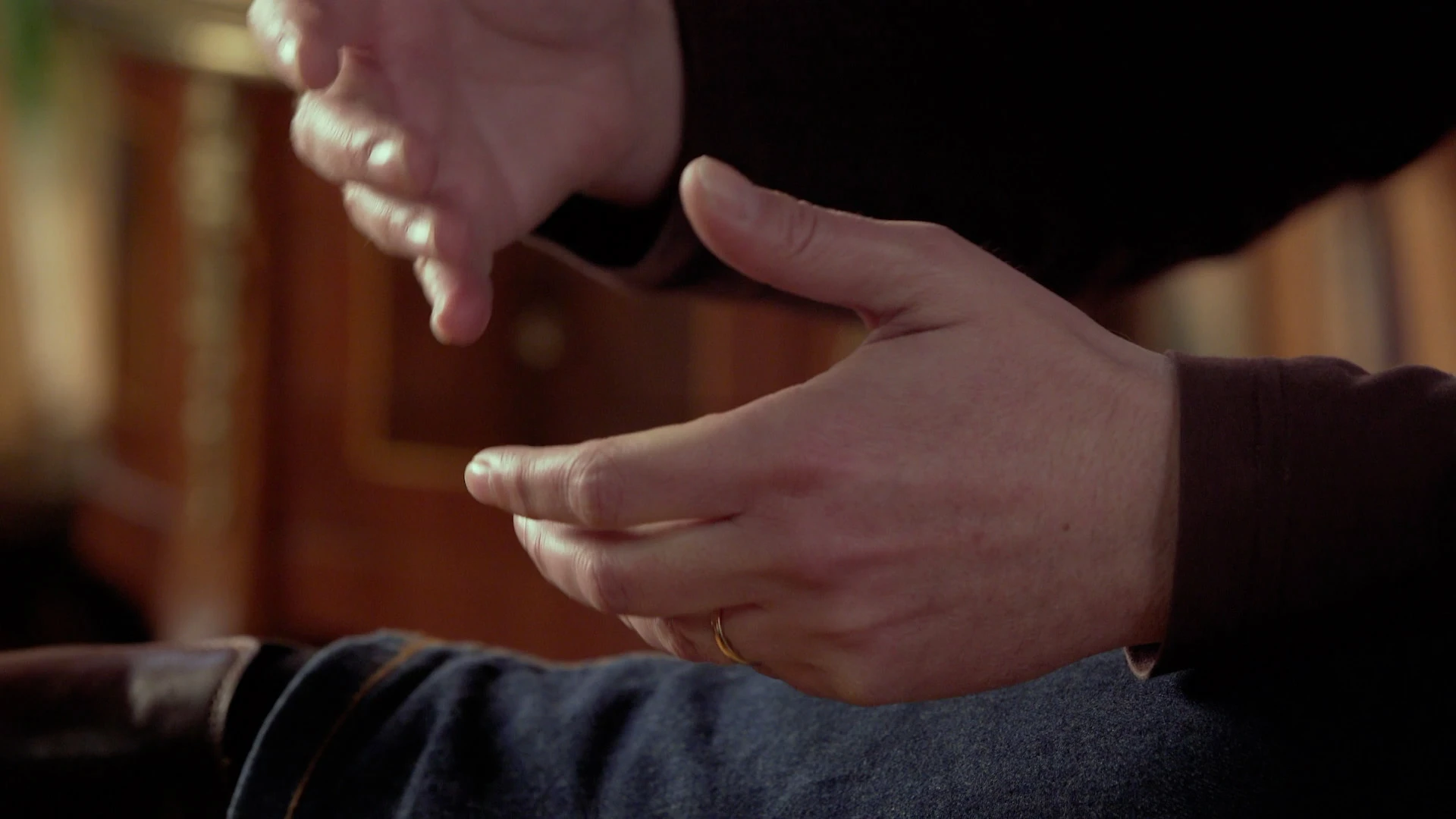
In 1926, the company was founded by Kakusaburo Okamoto as Okamoto Senyo Kosakukikai Seisakusho (Special-purpose Machine Tool Manufacturer). In 1935, the company's name and structure changed to form the present-day Okamoto Machine Tool Works, Ltd., and it has been active on the global stage, including the development of Japan's first surface grinder and the world's first CNC surface and form grinder. Okamoto Machine Tool Works is the world's only comprehensive abrasive processing machine manufacturer with a wide range of businesses including grinders, semiconductor-related equipment, gears, castings, etc.
The Men Who Carved the Future of Monozukuri Talk about the Now
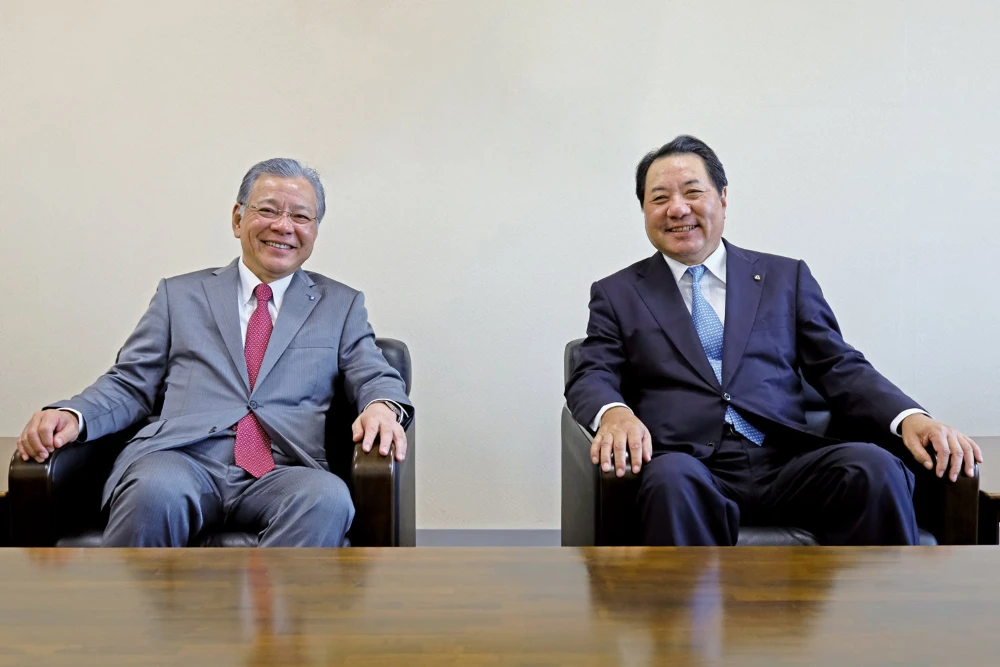
Tokyo Seimitsu Co., LTD
President & CEO
Hitoshi YOSHIDA
OKAMOTO MACHINE TOOL WORKS, LTD
President & CEO
Tsuneyuki ISHII
Lead-up to Joining Okamoto Machine Tool Works
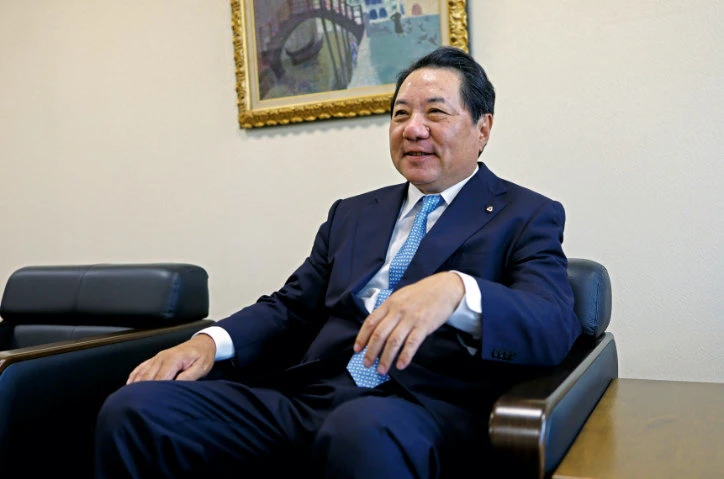
Yoshida
What was your journey up to joining the company?
Ishii
I was enrolled in the Department of Business Administration of the Faculty of Economics at Seikei University. I've been passionate about table tennis since junior high school and remained passionate as a university student too. I joined our company because I was from Odawara city in Kanagawa prefecture, and I wanted to commute from my parents' home. Because I graduated from the Faculty of Economics, I was assigned to the accounting department. I worked there for four years, but about six months after getting married at the age of 26, I was sent to Singapore as a financial manager. To tell the truth, table tennis was so big a part of my life that I even joined the Japanese table tennis club in Singapore where I was stationed there.
About work at the overseas assignment destination
Yoshida
How long were you assigned overseas for?
Ishii
I was assigned to Singapore for about three and a half years. Afterwards, I returned to Japan but was only there for about six months before I was assigned to Thailand. I think I was around 30 years old. At that time, we’d just entered the first wave of corporate expansion into Thailand, and the country was really only just starting to gain popularity.
The purpose of my assignment to Thailand was to build a factory. We built a factory in Singapore in 1974 where we made surface grinders. However, in the early 80's, because workers could no longer be hired in Singapore and castings were not available, we needed to build a support factory close by, and we chose Thailand.
Yoshida
You went to Thailand quite early, didn’t you? When ACCRETECH expanded to Thailand, many Japanese manufacturers already had a presence there because they’d followed their customers who were automakers, etc., and I got the impression that Thailand was more an extension of Japan, rather than an overseas nation. However, I remember that there were few industrial parks in Thailand around the time you were there. Wasn't it really difficult to set up a factory in such a place?
Ishii
Yes, it was difficult. What was particularly challenging was that we changed the site just before construction was scheduled to start. This is due to changes in the law and tax incentives for the site where we had originally planned to build. Then, we made a lot of twists and turns and eventually settled on private land in Ayutthaya. Now there are a lot of industrial parks in Ayutthaya, but there weren't back then.
We even struggled quite a bit after the site was finalized. There were just so many applications that had to be submitted, and it took around three months to complete these procedures. I was on the phone everyday to explain various applications and ask about the status of each. Also, parallel to these applications, the construction of the factory began, and I employed around 40 workers. We installed exactly the same machines we installed in Thailand so we sent our Thai employees to Singapore for training.
Initially, the Thai plant was built as a support plant for Singapore, but in 1990, we added a foundry and started to build finished products there. Now, on a unit basis, about 70% of our products are produced in Thailand. The number of employees has also increased to nearly 900.
For the first four years or so, I was the only Japanese, so I didn't have anyone to rely on, but it was a job that I had to accomplish, so I worked hard until the end. Just as my motto says, “Where there’s a will, there’s a way,” and I really got the sense during this period in my life that a person could accomplish anything if they truly devoted themselves.
Of course, I didn’t have to do it all on my own. I actually received a lot of help from a variety of people. I worked in the accounting department before my post in Thailand, so I’d never sold a machine. That’s why, when I suddenly went into the field and received sales inquiries, I didn't know what accessories I had to include, etc. On such occasions, I would call a sales team member and asked them to help me. After that, I would explain the machine to the customer, but it was quite difficult because I lacked sales know-how. I still somehow managed to seal the deal in the end.
Yoshida
I see. You were one of the pioneers who introduced Japanese machine tools in Thailand.
How did Okamoto Machine Tool Works get involved with ACCRETECH?
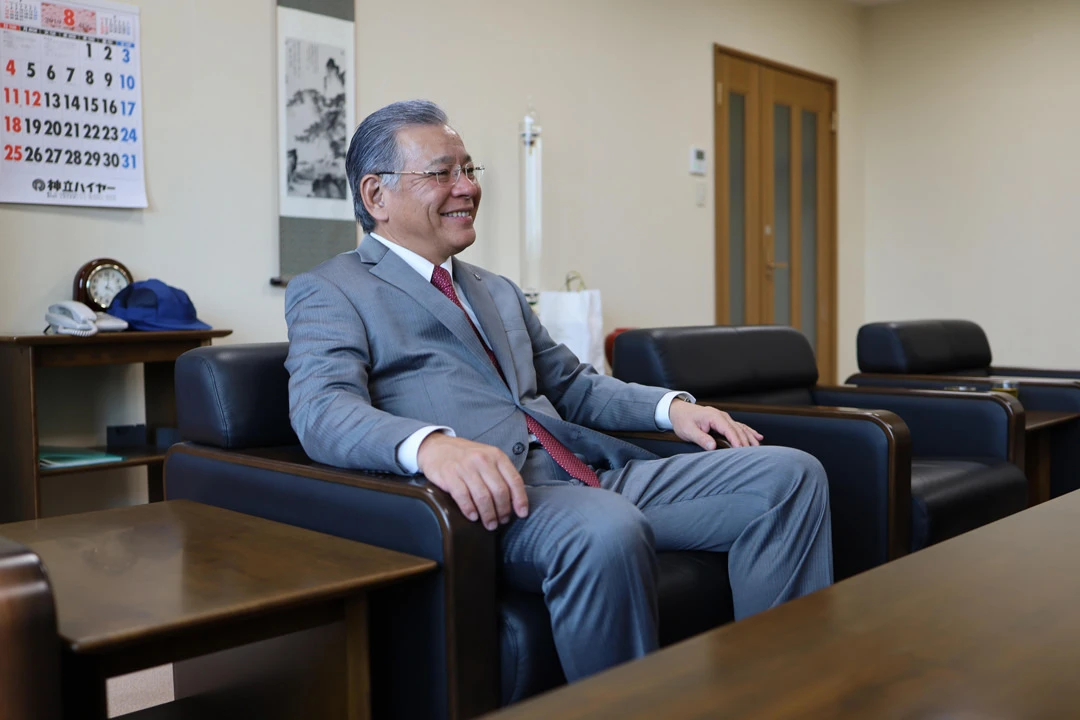
Ishii
Our relationship with ACCRETECH began when we introduced the machine control gauge, PULCOM Σ, which is an automatic measuring device. After that, the scope of our relationship expanded to include CMMs, which are general-purpose measuring devices, roundness and cylindrical profile measuring instruments, and surface roughness and contour measuring instruments.
Yoshida
That's right. We also make good use of your surface grinders. We very much appreciate your products not only at our Hachioji and Tsuchiura plants, but also at our blade factory in Thailand.
About the company motto of “Innovative Technology”
Yoshida
ACCRETECH’s motto is "WIN-WIN RELATIONSHIP" because we aim to build a win-win relationship with all stakeholders of our company. I heard that your company’s motto is “Innovative Technology” What is the meaning behind this?
Ishii
Our motto of “Innovative Technology” was established in 1964. It was conceived by our founder, Kakusaburo Okamoto in a time when performance had dropped once during the war, but even in the face of adversity, Mr. Okamoto never compromised in his pursuit of innovative technology, and that spirit lives on in our company today. That’s how it became our motto.
When we say “Innovative Technology” we are not merely referring to design technology and production technology but also the expert knowledge and skills, as well as the sales technologies, required for us to to fulfill our duties. Moreover, when we say “innovative,” we mean that it is necessary to acquire innovative expert knowledge, techniques, and skills in order to fulfill our roles, therefore we must not neglect research and study but instead always devote ourselves to our work with sincerity.
Moreover, in terms of the “Technology” aspect, to date we have passed technology down by word of mouth, but now a major issue we face is how to ensure it continues to be disseminated on into the future. There are still people on the manufacturing shop floor who judge whether a part is good or bad through physical contact, but we would like to be able to quantify this use of human senses.
Yoshida
You’re right. If it was possible to quantify that so-called intuitive master craftsmanship in actual numbers, then parts made with such know-how could be mass produced by machines, and the handing down of such skill would be easier.
Raising Customer Satisfaction
Yoshida
What are you working on to improve customer satisfaction?
In addition to expanding our showrooms, we have facilities called Measurement Centers at our plants in Hachioji and Tsuchiura, as well as our bases in Osaka and Nagoya. We built these centers because we wanted to create a system where we didn’t just line up our machines but also allowed us to listen to the needs of our customers in order to make spot-on measurement proposals and provide technical support.
Ishii
In recent years, we have also begun placing machines in our sales offices. Of course, we showcase machines where we have plants, such as Singapore and Thailand, but we also have showrooms in Chicago, Europe, etc. I thought that customers should actually be able to see our machines in reality, rather than in the catalog alone in order to appreciate their grinding performance and high quality. In order to sell high-added-value machines like Japanese ones, facilities such as showrooms must also be enhanced. Also, I want to gather feedback from visitors to our showrooms and reflect this in our operations.
Yoshida
Ultimately, it is important to be able to produce reliable results in the field. Customer satisfaction is important to secure market share, so we’d like to offer the same quality of services overseas as in Japan in order to increase our overseas market share.
Ishii
Well, the exact same services cannot be applied to both Japan and overseas due to the many differences in culture and perceptions, but we also hope to be able to provide high-quality services overseas. Since dealers are in charge of our company’s overseas sales, and these dealers have many services, it is difficult to provide the exact same services as those that exist in Japan, and the reality is that such overseas services are a step behind. We are currently making various preparations to enable us to sell the same high-added-value machines overseas as in Japan.
About the Future
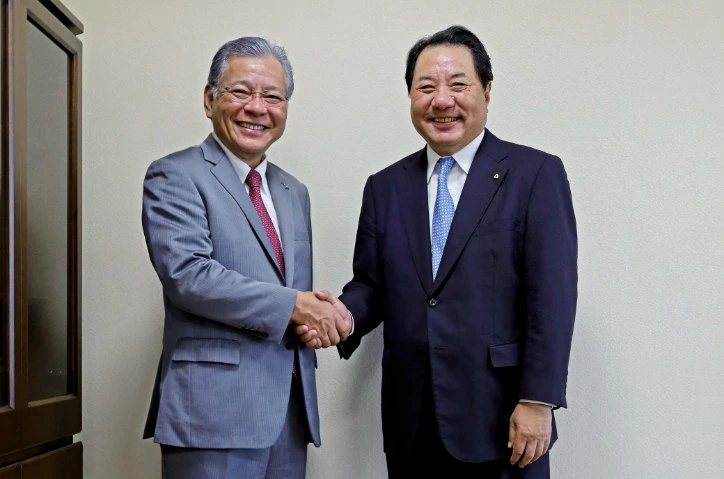
Yoshida
Recently, IoT, AI, automation, etc. are attracting attention. What kind of initiatives are you taking in regards to these areas?
Ishii
We are mainly promoting the mieruka (visualization) of factories. We're working on how to increase operating rates, but we’ve only begun trialing IoT and AI in recent years. I'm contemplating how our machines should be and implementing changes little by little.
For example, in order to develop AI software for preventive maintenance, we are collecting data on our grinders that tell us if certain vibrations arise or a certain level of heat is generated, danger would arise. We haven't started analyzing the causes of these events yet, but we can’t accomplish anything without data, so right now, our main focus is to just collect as much of it as we can. We sell an extremely high number of grinders, and we've experienced a lot of breakdowns. The strengths we’ve cultivated through such experience can be better leveraged through data collection.
Yoshida
We have developed software that can collect, accumulate, and centrally manage data from multiple different measuring machines in a single database, such as TESCHART Plus or ZEISS PiWeb. This promotes automation and labor-saving in such aspects as easy trend analysis and creation of test reports.
A solution to increase efficiency and improve accuracy of the overall production is to integrate measuring equipment on the production line so that it becomes one of the production assets. Then, when we reach a state where products cannot be made without measuring equipment, the demand for measuring machines will increase further.
I think demand will increase if we can change the shape of the measuring machine to suit the flow.
Do you have any expectations of us for the future, such as wanting us to develop a certain machine?
Ishii
I think that there are various measuring instruments, such as non-contact, but I would like to have a measuring machine that can measure things with a certain degree of accuracy easily at the customer's premises. It takes time and effort to unload a workpiece after grinding, measure its accuracy, and if unsatisfactory, reload it in the grinder then grind again. Not to mention, there is the fact that it is very hard to load a workpiece the exact same way twice. For this reason, we use a method called bench measurement, which is performed while the workpiece is in the machine after grinding has finished, evaluate the target grinding results, then grind again if they are not. I would like you to develop a device that can further evolve and simplify this process.
Yoshida
Instruments for shop floor measurement, right? It is important that a machine tool does not produce defective products and also important to be able to measure them immediately on the shop floor.
Ishii
In addition, I think that it is important to quantify what could only be measured with human senses until now. For example, being able to see radio waves with the naked eye. As I mentioned earlier when we talked about our corporate motto, if we can quantify human senses in a numeric form, we can solve the problem of passing down technical skills, and I think it would be really convenient to have such measuring equipment.
Yoshida
I see. In order to contribute to society further in the future, ACCRETECH will do our best to develop such products.
Okamoto Machine Tool Works, Ltd.
In 1926, the company was founded by Kakusaburo Okamoto as Okamoto Senyo Kosakukikai Seisakusho (Special-purpose Machine Tool Manufacturer) . In 1935, the company's name and structure changed to form the present-day Okamoto Machine Tool Works, Ltd., and it has been active on the global stage, including the development of Japan's first surface grinder and the world's first CNC surface and form grinder. Okamoto Machine Tool Works is the world's only comprehensive abrasive processing machine manufacturer with a wide range of businesses including grinders, semiconductor-related equipment, gears, castings, etc.

